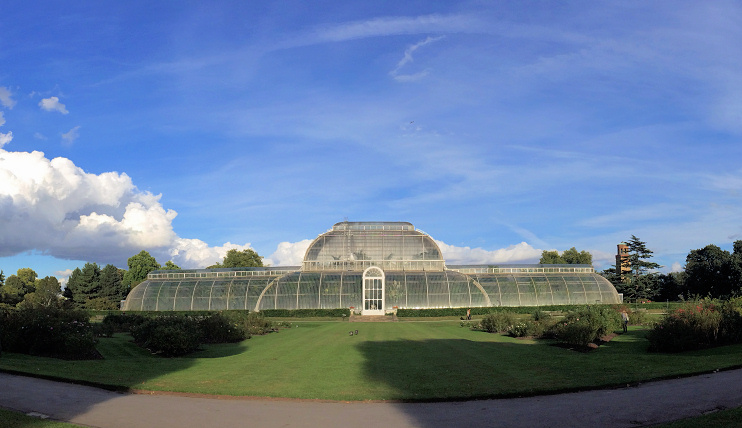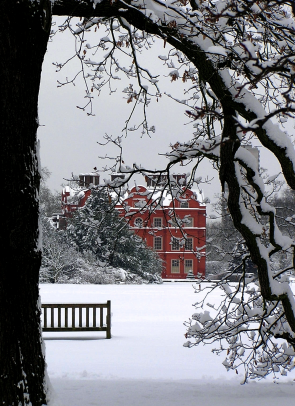Kew Gardens
Kew Gardens, Richmond upon Thames
The Royal Botanic Gardens occupy the north-western part of the Kew peninsula, across the Thames from Brentford

Kew Gardens are a convergence of three 17th-century projects: the Dutch House and the White House and their grounds, and the northward expansion of the royal gardens of Richmond upon Thames.
Over the first three decades of the 18th century, and especially during the reign of George II, several properties in Kew were acquired or built for members of the royal household either as permanent residences or places of leisure.

The Dutch House became Kew Palace, while the White House was rebuilt as the home of Frederick, Prince of Wales and his wife Princess Augusta. Queen Caroline appointed Charles Bridgeman and William Kent to embellish the landscape and add decorative buildings and most of their work was done in the early 1730s.
The octagonal ten-storey pagoda was built in 1762 as a surprise for Princess Augusta, the Dowager Princess of Wales, and Capability Brown remodelled the gardens of Richmond (formerly Ormonde) Lodge for George III and Queen Charlotte in 1765, but the lodge itself was demolished in the following decade.
Queen Charlotte is said to have designed the cottage that was built at the edge of the Old Deer Park in the early 1770s. At this time, Joseph Banks was made director of the gardens and set about importing, cultivating and then re-exporting consignments of exotic plants from Britain’s colonies abroad. Banks set up satellite botanical gardens as far afield as St Vincent in the West Indies and Madras in India.
In 1802 the various gardens of Kew were united (and the White House was demolished) and they were adopted as a national botanical garden in 1841. The Victorian directors enhanced Kew’s role by introducing brokerage facilities for vital commodities like tea, coffee, rubber, quinine and cotton, while resisting attempts to turn the gardens from a scientific establishment into a pleasure park.
Magnificent new buildings were erected for the cultivation of plants requiring different climatic conditions, including the Winter Garden (now the Temperate House) and the Palm House, which is shown in the photo at the top of this article.* In 1857 Museum No.1 opened on the eastern side of the Palm House pond. Successive new buildings have since buttressed Kew’s status as world centre of botanical research, as well as a breathtaking spectacle.
In 2003 UNESCO declared Kew a world heritage site, in recognition of its ‘unique cultural landscape’. With more than 1.6 million admissions a year, the gardens are as popular an attraction as Westminster Abbey and St Paul’s Cathedral.
George III was sequestered at Kew Palace during his episodes of ‘madness’.
Postcode area: Richmond TW9
Station: London Overground (North London line) and District line (zones 3 and 4)
Further reading: Katherine Price, Kew Guide, Royal Botanic Gardens, 2014
and Lynn Parker and Kiri Ross-Jones, The Story of Kew Gardens In Photographs, Arcturus, 2013
Website: Royal Botanic Gardens
